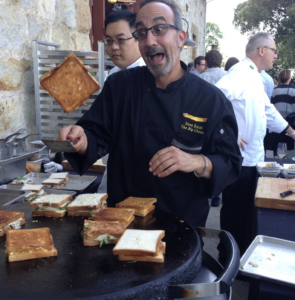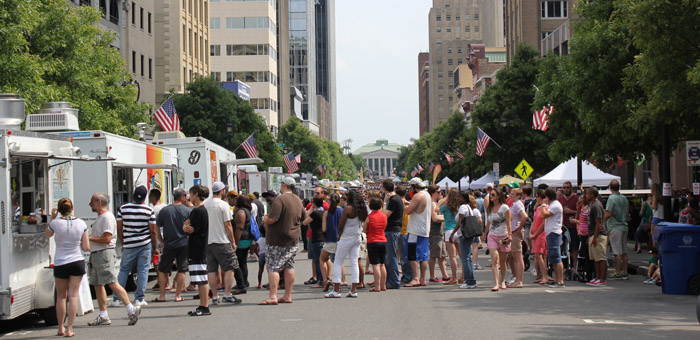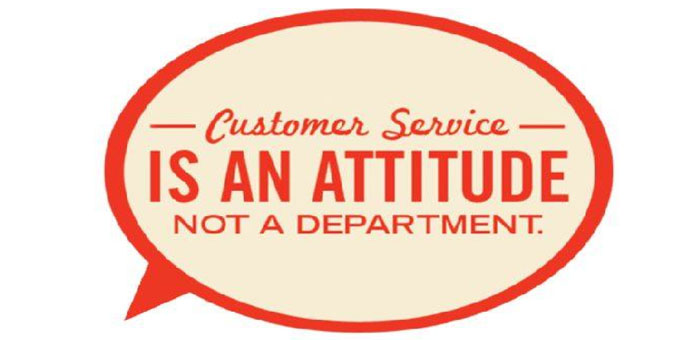Customer experience is one of the hottest buzzwords in the food truck industry today. Vendors are putting more time, effort and money into into building a strong customer experience for consumers. No longer are price and quality the only areas where food trucks compete, it is now also customer experience.
One early founder who noticed the importance of improving customer experience in the mobile food industry is Tony Lamb, founder of Kona Ice.
“I realized there was an opportunity to elevate the game,” Lamb says. “I wanted to create a brand that not only served great shaved ice but also looked the part. A consistent, professional image makes customers feel confident in their choice. It’s not just about the product; it’s about the whole experience.”
By focusing on branding, uniforms, and a clean, inviting presentation, Lamb didn’t just sell shaved ice—he sold an experience. And it’s those details that set Kona Ice apart and helped the business grow to $125 million in annual sales.
If you want to improve the customer experience, here are some specific ways to take the customer experience to the next level.
Page Contents
Building A Strong Customer Experience
Customer experience is defined by interactions between a customer and a food truck throughout their business relationship. Today we’ll offer some basics to building a strong customer experience at your food truck.
Create a Two-Way Conversation Outside the Truck
Before your customers even make it to your food truck line, their customer experience has already begun. The premise of food truck marketing is to connect with customers. However, the communication that food trucks initiate and respond to are often opportunistic, one-directional, and fail to drive value. Sometimes, they’re not even directed at customers. Make sure that your online conversations are personalized, proactive and social.
A great example of food trucks creating a two-way conversation outside of the truck is The Grilled Cheese Truck in Los Angeles, founded by Dave Danhi. Known for their social media presence, they engage with their followers by responding to comments, asking for menu suggestions, and sharing customer photos.

Founder of The Grilled Cheese Truck Dave Danhi, doing his thing.
This approach makes customers feel like they’re part of the Grilled Cheese Truck family, building a loyal following and encouraging repeat business. As one regular customer puts it, “I love how they actually talk to us online. They asked for new menu ideas, and a few weeks later my suggestion was on the menu.”
Another standout is Cousins Maine Lobster, which has taken customer interaction to the next level by using their app to gather feedback, answer questions, and even take pre-orders. This level of engagement ensures that customers feel heard and valued before they ever step up to the window.
By focusing on personalized, proactive, and social communication, these food trucks demonstrate how effective two-way engagement can enhance the overall customer experience. It’s not just about posting updates or announcing locations; it’s about starting a conversation, making customers feel connected, and showing that their opinions matter. This kind of interaction builds community, fosters loyalty, and ultimately drives more business.
Engage with people in waiting lines
Long wait times can easily frustrate customers and leave a bad first impression. This frustration often intensifies when staff appear indifferent, focused solely on those already at the service window. The key to turning this around is proactive engagement. Placing a staff member in the crowd to interact with waiting customers can make a significant difference. This person could take orders ahead of time or provide updates on how long the wait might be, turning a potentially negative experience into a more pleasant one.
Hot dog vendors are experts at this kind of customer interaction. As shown in the video, veteran hotdog vendors keep the energy lively and personal, engaging with people in line with a quick joke, asking about their day, or making recommendations on what to order. These small interactions create a friendly atmosphere, making the wait feel shorter and the experience more enjoyable. Obviously this guys customers don’t mind the wait.
Listen to Feedback
Many food trucks offer feedback forms to customers. However, they are often not customized to specific issues that locals may have. For instance, customers visiting trucks in a crowded neighborhood may complain about parking. Similarly, if you run a Taco truck, you are likely to face unhappy customers who complain about the food being either too spicy or not spicy enough. Understanding these common issues that your target customers face will help you fix them before they get worse.
Improve Your Branding
A clean, cohesive brand can significantly elevate the customer experience of a food truck. When your staff wears uniforms and your truck showcases a polished design, it instantly communicates professionalism and attention to detail, much like the standards set by well-known restaurant chains such as In-N-Out Burger. These chains are famous for their crisp uniforms, spotless kitchens, and consistent branding, all of which contribute to a sense of reliability and quality.
Applying the same principles to your food truck can set you apart from the less reputable “roach coaches” that may operate in your area. A well-branded truck isn’t just about looking good; it’s about signaling to customers that you take pride in your operation. This level of professionalism makes your truck more memorable and recognizable, fostering trust and encouraging repeat business. Much like how In-N-Out’s iconic red and white aesthetic instantly tells customers they can expect a certain level of service and quality, a clean, uniform look for your food truck can make all the difference in creating a positive, lasting impression.
Additional Tips On How To Build A Great Customer Experience
- Strive to greet customers with a friendly greeting. Window servers need to be vigilant in watching the service window. This impacts a customers’ first impression and you know what they say about those.
- Keep it clean. Statistics show that cleanliness is one of the most important aspects of how guests feel about a food truck. This includes the area around your truck as well as the inside and outside of your food truck.
- Make sure your customers’ last experience is a good one. Present the food a timely fashion and promptly handle any additional requests they have. This is especially important to those customers who are in a hurry.
With the introduction of review sites and social media, food trucks realize they need to focus more on the customer experience. It’s important to find ways to ensure a positive experience so you not only deter negative feedback online, but also drive repeat business that maximizes revenue.
How is the customer experience at your food truck? Do you have any additional tips that we’ve missed? Share your thoughts on this topic on social media. Facebook




